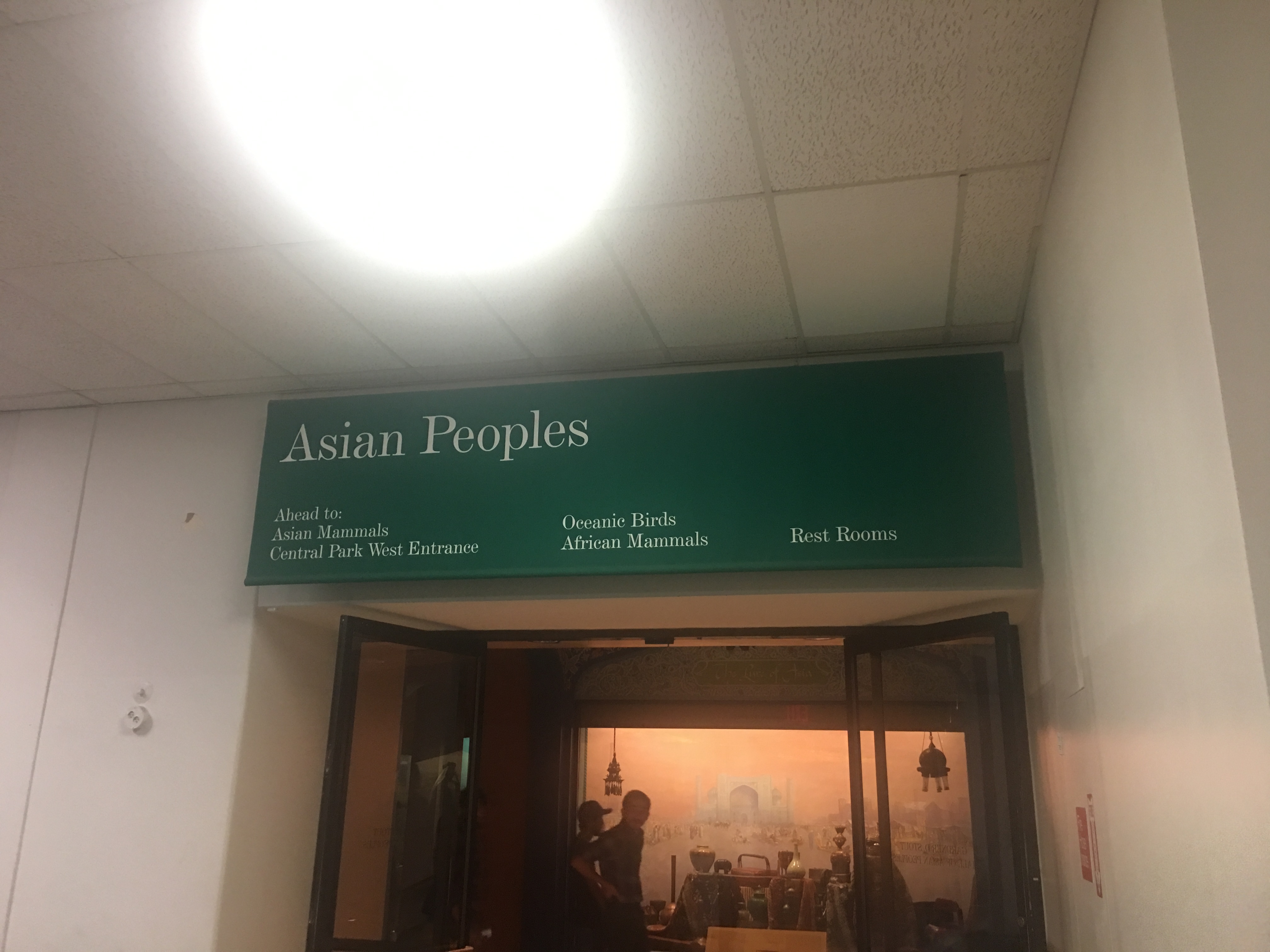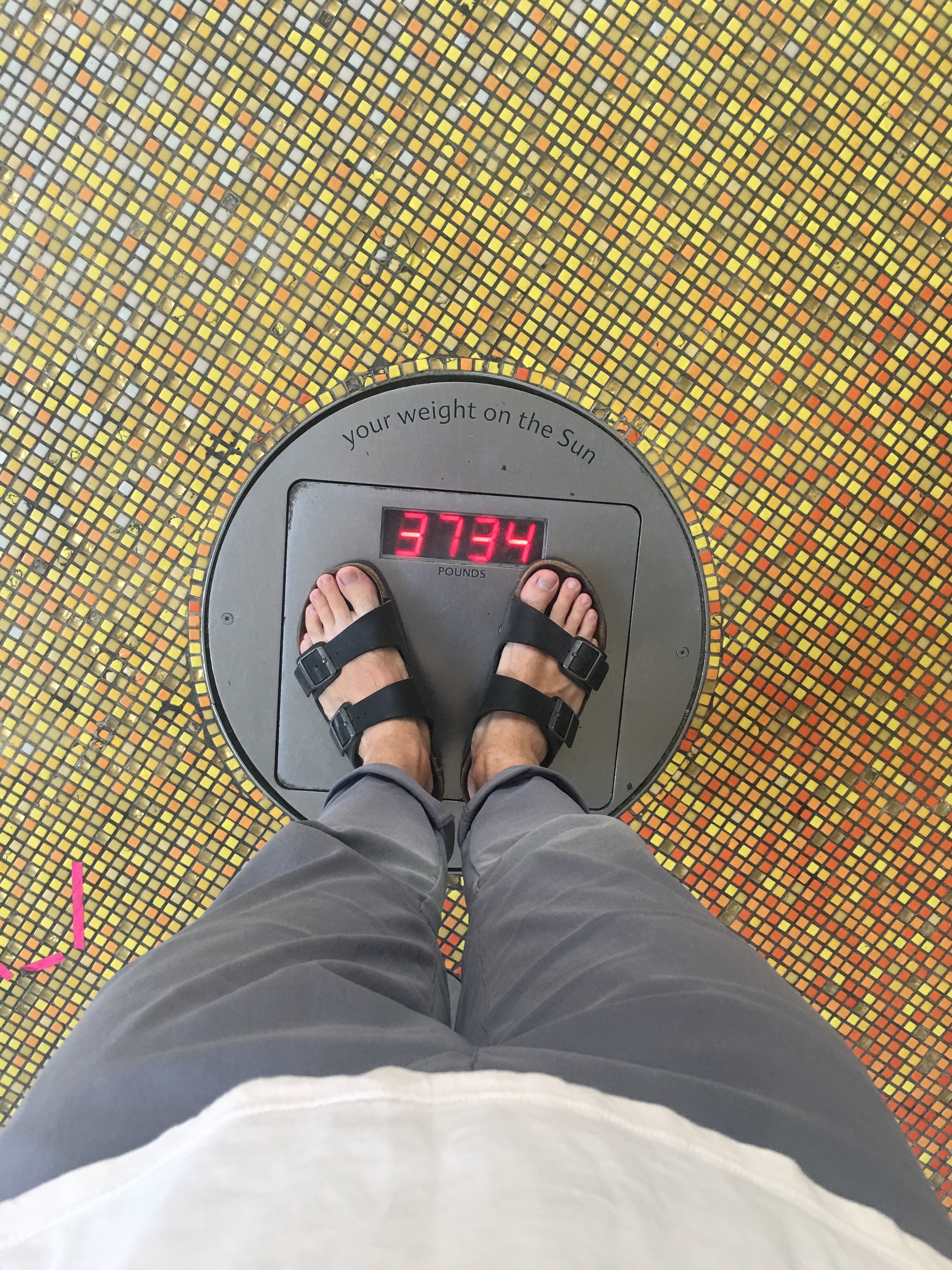American Museum of Natural History
My first thought walking up to the Central Park West was “I hate this goddamn statue”. Teddy Roosevelt, the magnanimous colonizer, leading the Othered literal lower-thans toward civilization, away from inhumanity. The statue recontextualizes a history of violence, slavery, and cultural erasure into one of progress, benevolence, and grace. This was my first time seeing it in person and it feels like a visceral affront, hard to look at, hard to stomach. My only previous familiarity with it had been with the protest run by the (now defunct?) art collective Decolonize This Place.
 This had certainly loaded my expectations but the scale and placement of the statue made it even worse to see in person.
This had certainly loaded my expectations but the scale and placement of the statue made it even worse to see in person.
One thing to be said for it, however, is that it does perfectly encapsulate the particular cultural worldview of the museum’s culture halls, made so clearly for the white American viewer, with no expectation that a human of any other description would enter.
Perhaps what is most offensive to me about the culture halls is the relegation of these non-Western, non-European cultures to the domain of “natural history”, separate from humanity and human endeavors. It is not a “anthropology museum” and there is no equivalent hall of European culture, the implication of which is that those Western cultures, with their high civilization, have moved beyond the domain of animals. The juxtaposition of the animal halls with the human ones only hightens the effect.

 Juxtapositions leading to a cognitive dissonance of categorization: as this film on the 4th floor reminded me, Asian Peoples are Asian Mammals.
Juxtapositions leading to a cognitive dissonance of categorization: as this film on the 4th floor reminded me, Asian Peoples are Asian Mammals.
I don’t think there is an easy fix, or a fix that can satisfy all stakeholders. Hacky type solutions might be the best available, adding a European peoples hall would be gesturally appropriate but would be a bandaid on the much bigger issue. Extensive wall text explaining the provenance of the exhibits, their history, that disavows and contextualizes the worldview of the exhibits would be beneficial, but… who reads the wall text when there are shrunken heads to gawk at? Many of the visitors are children for whom nuanced discussions and contextualizations would be lost in the noise and the spectacle.
Some anecdotes:
-
I felt deep emotion in some of the science exhibits, glints of wonder and joy at scale and discovery and the breadth of knowledge, touching the meteor felt meaningful
-
I am much heavier on the sun

-
children seemed to be EXTREMELY excited with flurries of different emotions: one girl was crying at the sight of a stuffed peacock being ‘killed’ by some leapords, another ran around screaming in joy at seeing the toys in the gift shop(“I found the toys I found the toys!!!” while his dad tried to change his focus to the fact that there were dinosaurs still to be seen), another insisted on having his parents tell a story about the elephants and their family unit.
-
there was a man purportedly doing magic tricks in front of the gift shop but he seemed to actually be playing three card monty with some kids all holding dollar bills
-
so many gift shops!
-
it was extremely busy and when I stepped in I immediately needed a cocktail
-
the food court only had the most rudimentary beer and wine
-
none of the water fountains worked above the first floor
-
it was very difficult to find my way out
-
not enough seating
-
paying extra for the special exhibits did not feel worth it
-
the whole museum feels quaintly shabby, even the new science exhibits with their gestures towards interactivity and big screens feel a bit like the 1990s. What does a natural history museum of today look like? Even the idea of a natural history museum feels to me like an “idea of the 1990s”, but do I feel that way only because of associations to my own childhood?